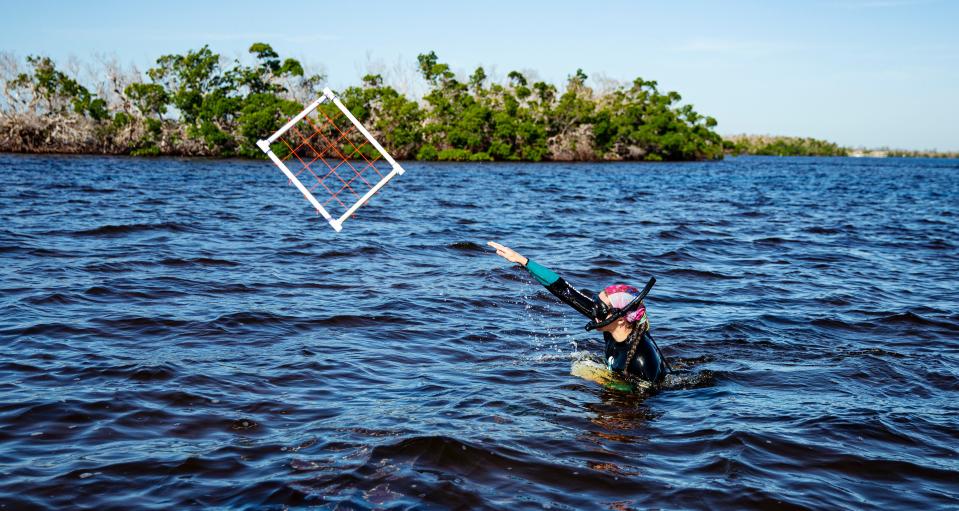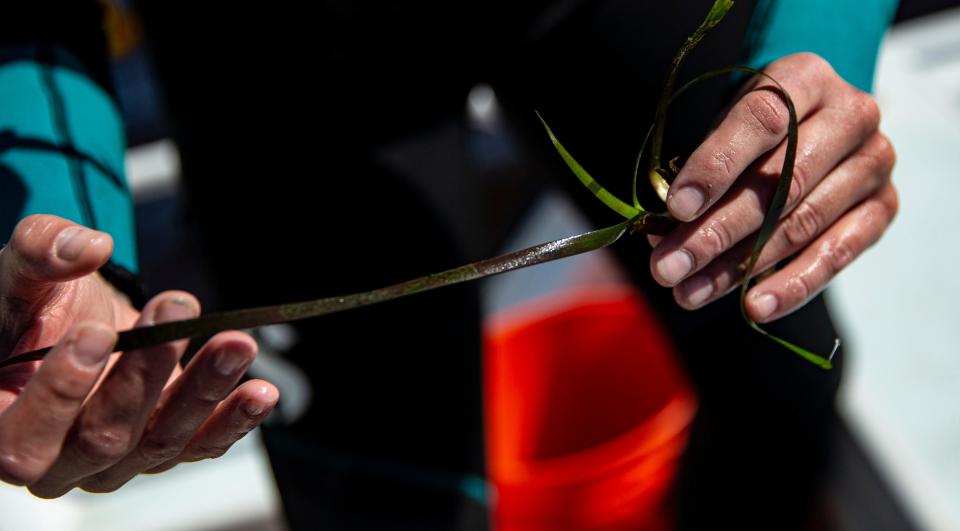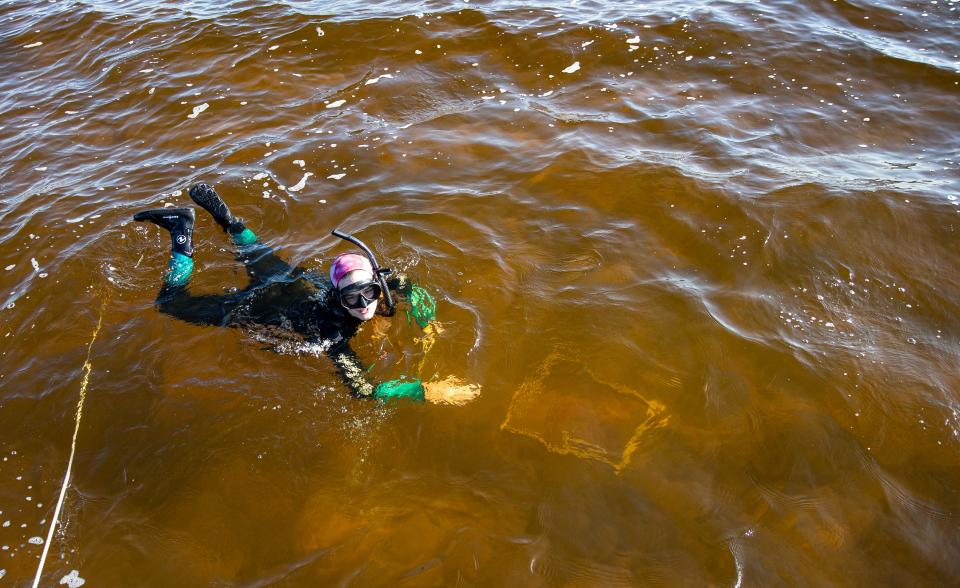Florida monitoring sea grasses in aftermath of Hurricane Ian. What did scientists find?
Sea grasses in San Carlos Bay and near the mouth of the Caloosahatchee River appear to be on the rebound after getting plowed by massive waves during Hurricane Ian last year.
Scientists with the South Florida Water Management District surveyed several areas in the bay with the aim of documenting the coverage and size of sea grasses as part of the overall Everglades restoration, or the Central Everglades Restoration Plan, or CERP.
"We randomly mapped out these sites and I'm going to throw one of the quadrants randomly around the boat and do that eight times and I'll get the percent coverage and height of the sea grass, and I'll do that for the whole quadrant and for every site," said Elizabeth Salewski, a senior scientist at the South Florida Water Management District, the state agency in charge of Everglades restoration projects.

Salewski and a crew surveyed sea grasses in San Carlos Bay, near the mouth of the Caloosahatchee River, last week to see how grasses were recovering after Ian.
"A lot of cool little critters use this habitat," she explained while on a recent snorkeling expedition. "We're doing this as part of sea grass monitoring for Everglades restoration."
So what did she find?
The health of sea grasses in the bay and river are an indicator of the overall condition of the Caloosahatchee River, which was connected to Lake Okeechobee more than a century ago to drain the historic Everglades for farming and development.
"With Ian, the seagrass took a heavy hit," Salewski said. "We lost more than 50% of the coverage we were seeing. Pre-Ian our sea grass was on average 55 to 60% coverage, and that's really good coverage. But we got down to about 20 to 30% and that's OK, but there was a significant loss."

More: Florida's real flamingos: Pink treasures still being reported on state's west coast
Salweski said wave energy from Ian physically removed much of the area's seagrasses, and some plants likely died when raging freshwater washed off the Southwest Florida landscape after the storm passed.
"It can make it tricky for sea grass to recover when freshwater is coming from the system," she said. "The grass that's dominate today has a high salinity preference, and when freshwater comes this far down, we won't see this type of sea grass."
What do advocates say?
Keeping the grass that's left in San Carlos Bay is important because it helps stabilize sediment and provides habitat for fish and other wildlife.
Calusa Waterkeeper Codty Pierce said he saw sea grass impacts immediately after the storm.

"The biggest thing is that with the storm surge from Hurricane Ian washed most of the sediment off the (Sanibel) causeway islands, and that smothered an area of flats, " Pierce said. "There are some areas that the sea grass blades that were very well established and the older ones with roots well into the sediment did well, but some of those grass beds before Ian was super thick grass. After Ian we saw grass that was sparse in some areas because the wave force blasted them out."
Salewski and her crew will continue to monitor the grasses in the bay, visiting random sites twice a year.
"It is slowly starting to improve," she said. "It doesn't' take much to remove or damage sea grass and it takes a lot of time to grow back. They need a seed set that's there, or new structure. But we're seeing a little bit of recovery."
Connect with this reporter: Chad Gillis on Facebook.
This article originally appeared on Fort Myers News-Press: Sea grass starting to recover in Florida after being blasted by Ian

